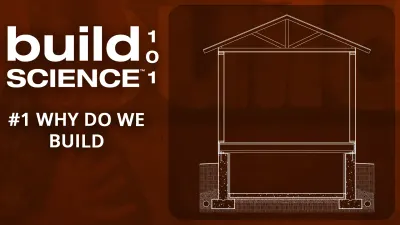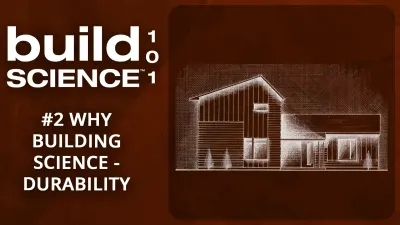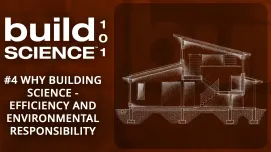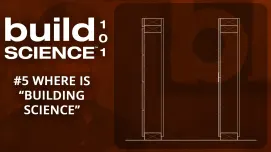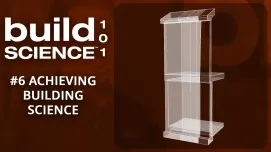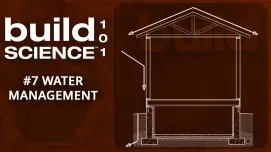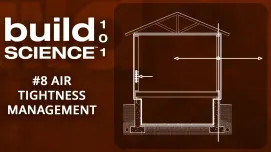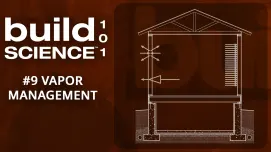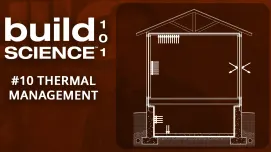Build Science™ 101
Episode 3: The Building Science of Comfort and Health
In this episode Matt & Steve delve into the building science behind comfort and health in construction. We explore the multifaceted concept of comfort, considering both builder and homeowner perspectives. We discuss climate tuning, the role of mechanical equipment, and the importance of understanding temperature and humidity variations based on location. Episode 3 highlights the significance of matching HVAC equipment to the house and the importance of thermostat placement and also emphasizes the impact of humidity on comfort and health, addressing issues like mold and air quality. Additionally, it explores various factors affecting indoor air quality, from filtration systems to off-gassing materials, cleaners, and air fresheners. Lastly, episode 3 stresses the need for ongoing maintenance, proper filter selection, and a holistic approach to designing a healthy indoor environment.
To take the quiz and download the companion Guidebook, click here.
Craftsmen Go with Sashco! Try out Sashco’s line of sealants with this exclusive sampling offer extended to our Pro viewers. Request your sample here.
Thanks to our Sponsors!
Episodes
Episode 1: Why Do We Build?
Episode 1
Build Science 101 series combines engineering, architecture, chemistry, and physics to create functional and aesthetically pleasing structures, emphasizing essential building science concepts. Graduating from good to great in building requires understanding spaces, energy efficiency, comfort, health, and durability.
Episode 2: Why Building Science Matters – Durability
Episode 2
The episode emphasizes the importance of durability in construction, discussing building science, historical practices, and the role of factors like insulation and water management. It advocates for prioritizing durability in building design.
Episode 4: Energy Efficiency and Environmental Responsibility
Episode 4
In this episode, Matt & Steve discuss energy efficiency, environmental responsibility, and the importance of comfort in construction. They advocate for stewardship, dispel myths, and promote building longevity with reduced environmental impact.

 Share on facebook
Share on facebook Tweet
Tweet Email
Email Share on Linkedin
Share on Linkedin






